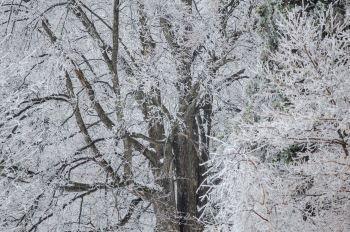Tips for dealing with tree damage from winter storms and ice

Many homeowners in southern Michigan will be looking at ice-covered trees and broken branches this week. Wind and ice have swept through lower parts of the state with the potential for significant tree damage.
Taking proactive steps after a storm has damaged trees can make the difference between losing them or giving them a good chance of survival.
Keep it safe.
“Your life is more important than your trees or your property,” said Kevin Sayers, who leads the Michigan Department of Natural Resources’ Urban and Community Forestry program. “Be aware of downed power lines or trees touching power lines and stay at least 25 feet away. Immediately report any downed lines to your local utility company. Never attempt to prune or remove trees near power lines.”
When trees are coated in ice, safety is the top priority. If you choose to work on your trees, always use proper tools. Don’t overestimate your abilities or use equipment inappropriately.
Delay tree work and clean up if possible.
Clearing downed trees and branches to safely get into and out of your home and property may be necessary. However, if trees are weighed down or broken, its best to delay work until conditions improve. In many cases, ice-loaded trees will recover on their own once ice melts.
Once it’s safe to get out and work on your trees, use these tips to prune, including any ground-level broken branches.
Hire a professional.
If large limbs are broken or hanging, or if climbing or overhead chainsaw work is needed, hire a professional. Find a qualified, insured arborist. Arborists are tree experts trained to evaluate damage. This is especially important when trees are leaning against wires, structures or other trees.
Consult your insurance policies.
Those affected by damage from falling trees or branches may be asking: Does my insurance cover this? It’s always a good idea to review your policy and contact your insurance agent to clarify issues (such as a neighbor’s tree) in advance if possible.
Otherwise, once conditions are safe, take photos or video of the damage and notify your agent before you do any work or repairs. If your car is damaged by falling tree branches, your auto policy may pay for damages. Lastly, beware of scam artists posing as tree care companies. Consult with your insurance company before signing any contracts and go over how they will handle any payments to you or a contractor.
For additional tree care information, visit Michigan.gov/UCF.
Contact: Kevin Sayers, 517-582-3209






